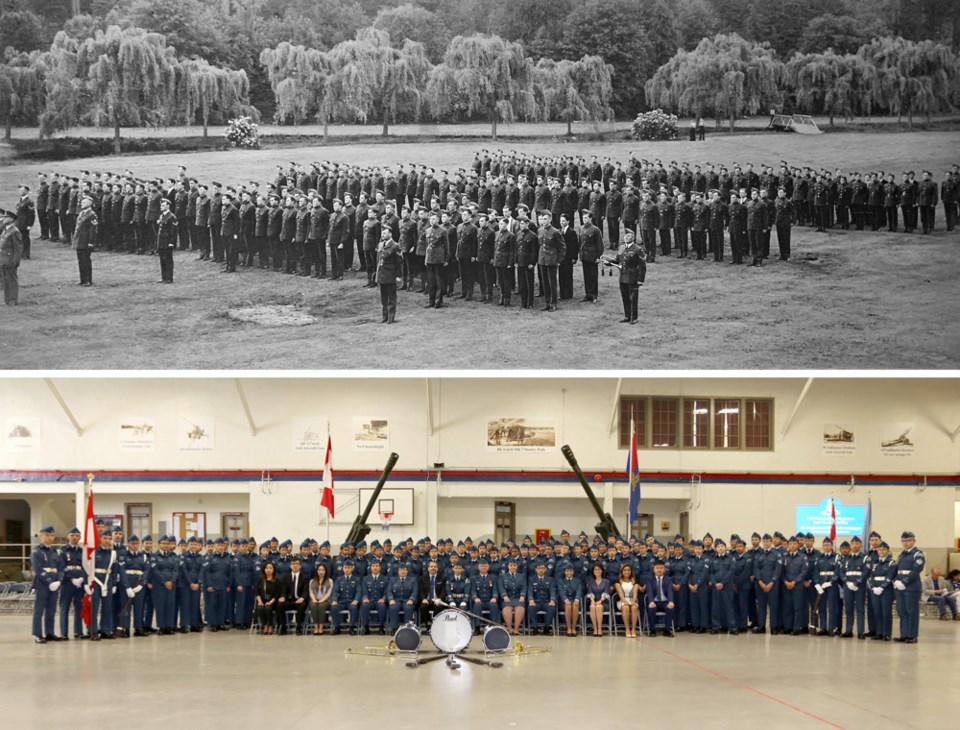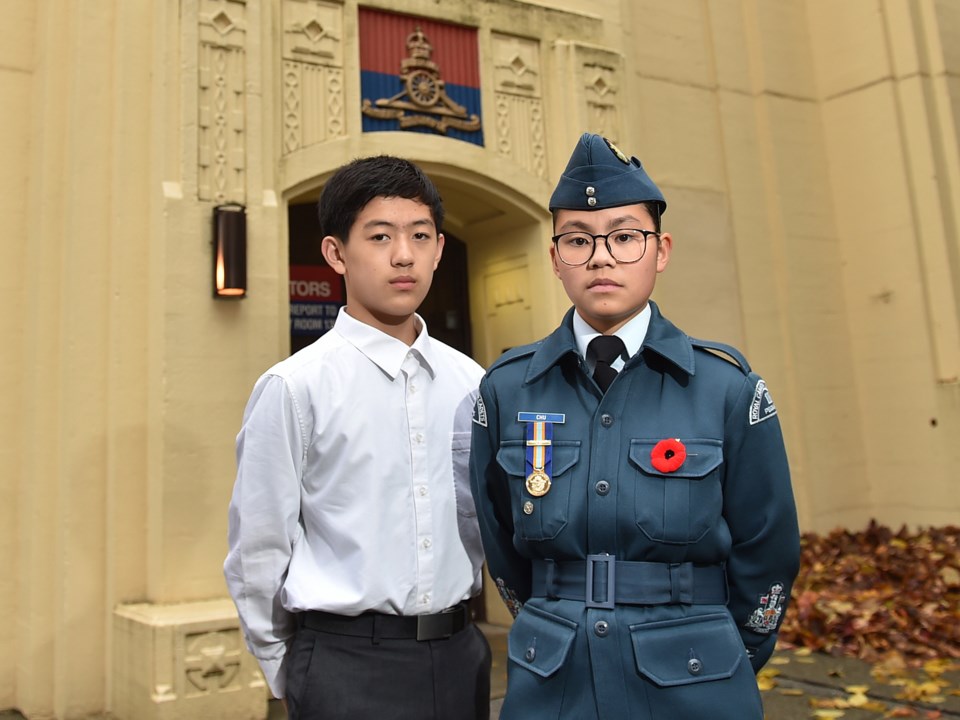Over the course of eight decades, a cadet troop on Vancouver’s West Side has witnessed events that changed the face of history.
Troop members have made some history over that time as well.
Based out of the Bessborough Armoury near Arbutus and 11th, the 111 Pegasus Royal Canadian Air Cadets Squadron is in the midst of celebrating its 80th year in operation.
It’s the oldest squadron in Canada, and the first in the nation to integrate women into the program back in the mid-1970s.
“We really try to impart a sense of community on them and a sense of their place in Canada,” said Paul Strangway, chair of the squadron’s sponsoring committee. “Go out there and be proud that you’re Canadian and use some of the skills and knowledge we taught you to improve your lot in wherever your career is going to take you. I think that’s a skill that’s sorely lacking in a lot of areas in our society.”
The troop first got off the ground thanks to a pair of First World War fighter aces, Alan Duncan Bell-Irving and A.W. (Nick) Carter, who were credited with close to 30 aerial victories between them during the war.
What was first referred to as 1601 Air Force Cadet Wing morphed into 111 Pegasus Squadron on Jan. 25 1939. Roughly 1,000 men showed up and 200 made the cut.
The boys’ first big days out fell on May 29 and 30, when they lined the city streets for the royal visit of King George VI and his royal consort, Queen Elizabeth.
Less than four months later, Canada declared war on Germany and the Second World War was in full swing.

Building character
That’s not to suggest the cadets are a type of feeder system for the Canadian Armed Forces, despite the fact that parts of the cadet curriculum are drafted by the Department of National Defence.
Instead, one of the primary goals is getting airborne. Cadets are taught basic aviation skills and get to try their hands at flying small aircraft and gliders across the region. First Aid, fitness training and civic involvement are also stressed in the program.
“I definitely want to learn how to fly planes, but I don’t really know if I want that as my job,” said Howie Wang, who entered the program in September. “I also want to learn about the military aspects, how the ranks work and the drills that we do.”
At 12, Wang is at the entry level age for cadets. Eighteen-year-old Emma Chu represents the tail end of the cadet program and graduates in May. Over the course of six years, Chu has learned to play three instruments — clarinet, bass clarinet and euphonium — and gained a heightened appreciation for health and fitness.
She’s now studying computer science at the University of B.C.
Outside of everyday lessons around marching, drills and flying, Chu has gleaned some intangibles that she’ll carry with her for life.
“I’ve been able to recognize what my weaknesses and strengths are,” she said. “I’m able to work in a group where there are so many leadership styles and mindsets. I’m able to adapt to those things and overcome situations together as a group, rather than as an individual.”
Discipline and leadership are two constant calling cards for cadets, particularly the older set. Senior cadets are specifically tasked with mentoring younger recruits, and help them with everything from marching cadence to First Aid.
“You look at the kids who joined five years ago, some of them were shy, quiet 12 year olds who, when they would stand up in a room, could barely say their names,” Strangway said. “They’re now confident young men and women. That confidence they develop is amazing to watch.”
‘A sense of purpose’
Sandy Gilberstad is proof positive of that character development. She was a member of the all-female troop known as 5 Squadron from 1961 to 1964, and trained out of the former Royal Canadian Air Force base in Kits that closed the year of her graduation.
At 72, Gilberstad counts her time in the cadets as some of the most formative years of her young life.
“We were young women who were into something that gave us a sense of belonging and a sense of purpose,” she said.
Now residing in White Rock, Gilberstad grew up in south Vancouver and went to John Oliver secondary school. She joined the cadets alongside four of her classmates at a time when Elvis was still the king and John F. Kennedy led social change down south.
The 20-plus women in 5 Squadron trained separately from their male counterparts at that time but at the same location.
“Cadets was how we branched out and got to meet young women and young men from other high schools,” Gilberstad said. “Almost all of us, our first boyfriends were members of 111.”
Parliamentary change in 1975 paved the way for co-ed cadets and 5 Squadron merged with their 111 Pegasus counterparts. It was the first troop in Canada to consist of both men and women.
Gilberstad aged out of the cadet program in 1964, the same year she graduated from high school. One of the four women she joined the program with went on to marry a fellow from the 111 Pegasus Squadron.
Gilberstad is now retired after a 40-year career in banking.
“Where else would I have learned how to take apart a rifle, discipline or teamwork? If you’re not into sports, especially for young women, it was a whole different world,” Gilberstad said. “I look back at this as one of the best times of my young life. It broadened our horizons greatly.”
The 111 Pegasus Squadron will celebrate its 80th birthday with a parade and cadet alumni dinner Feb. 9, at the HMCS Discovery in Stanley Park. For details, go to www.111air.ca.
@JohnKurucz



